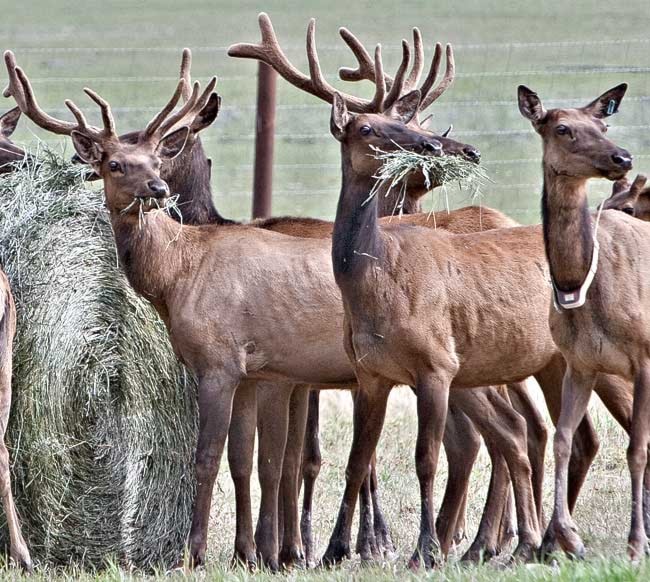Nobody knows if winter ticks are dangerous to Yukon wildlife, but it’s best to keep them under control in the meantime, say Yukon wildlife officials.
That’s why, for the second year running, Yukon elk are being rounded up and de-ticked.
No matter how many elk are cleaned up, fully eliminating the parasites is impossible.
“The ticks are here to stay,” said Rick Ward, the moose, elk and deer biologist with Yukon environment.
Once a full tick assessment is complete, the Yukon may decide to do away with winter tick management altogether, welcoming them as a natural component of local biodiversity.
Or, they may need to wield their tick-killing skills to even greater effect.
Winter ticks latch onto a host during the fall and stay on them until early spring, at which time they drop off to lay eggs.
By keeping elk in a pen, the dropped-off ticks are harmlessly contained within a small area.
In the first year of the program, elk were corralled into the pens using low-flying helicopters. This year, elk entered the baited pens of their own volition.
Birth rates have skyrocketed among the elk.
“In the past, when they weren’t penned, there were probably less than half a dozen calves being produced per year,” said Ward.
“Last year—the first year we penned them—they produced about 50 calves,” he said.
Predators, stripped of succulent elk calves, should still be able to get their fill on deer and other animals.
“And bears are omnivores, so they can eat vegetation instead,” said Ward.
So far, the ticks are largely a cosmetic problem, causing unsightly hair loss on elk. The fear is that the ticks may be a threat to other wildlife.
Yukon deer have already started to show signs of tick infestation—but it may have nothing to do with the elk.
“They could have brought winter ticks with them when they moved up from BC,” said Ward.
In extreme cases, the ticks have been known to kill moose, but only in areas of “very high moose densities,” said Ward.
“Orders of magnitude higher than we have in the Yukon,” he said.
Winter ticks first started to crop up in the mid-1990s, right about the time that tick-infested southern elk were brought up to supplement waning Yukon herds.
“It could be that ticks also came up on mule deer,” said Ward.
De-ticking operations have already cost $300,000.
Contact Tristin Hopper at
tristinh@yukon-news.com
